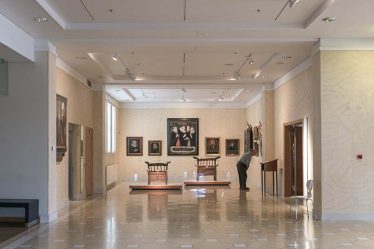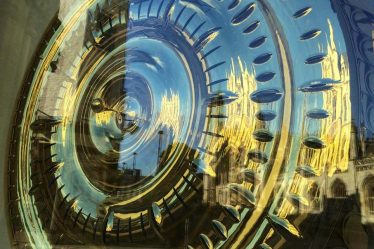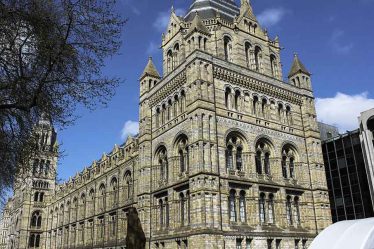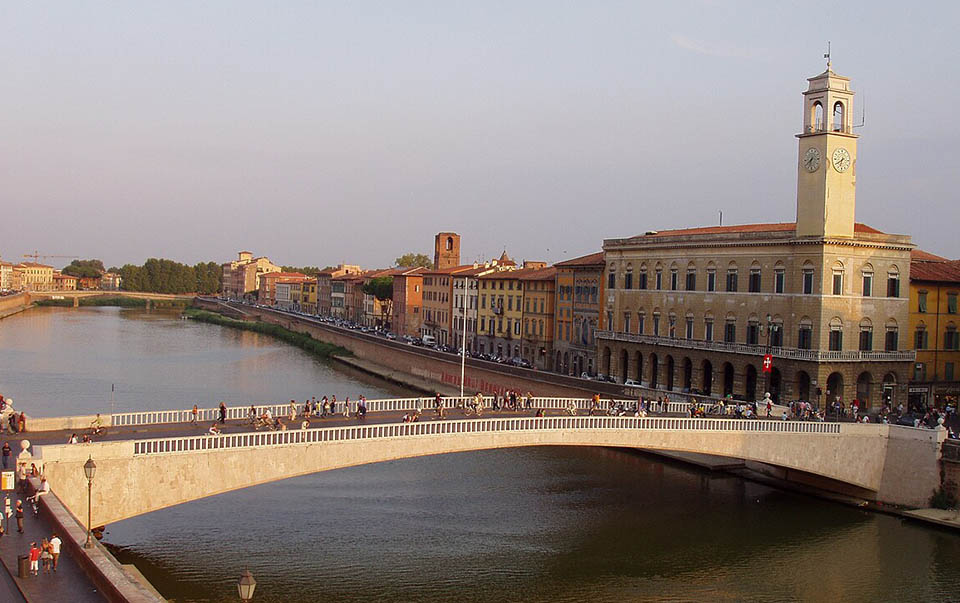
Pisa, often only remembered for its iconic Leaning Tower, is so much more than a snapshot in time. As I wandered through its narrow streets and expansive piazzas, I couldn’t help but marvel at how this charming Tuscan city effortlessly blends its storied past with the vibrancy of contemporary life. Whether it’s the ancient buildings that whisper tales of the past or the modern cafes that hum with youthful energy, Pisa offers something for every kind of traveler.
My journey through Pisa began on the banks of the Arno River. The city, situated on the western edge of Tuscany, offers a stunning view of the surrounding landscape. It’s easy to see why this area was settled so long ago—its position near the river and the fertile plains made it an ideal location for both ancient trade routes and cultural exchange. As I strolled along the river’s edge, I could hear the murmur of the water, and it added an extra layer of calm to my exploration. The bridge that crosses the Arno, Ponte di Mezzo, has stood for centuries, and it provided me with a perfect vantage point to take in the scene. On one side, I could see the Leaning Tower, while the other side showed off the everyday life of modern-day Pisa.
The Leaning Tower: A Symbol of Pisa’s Unique Charm
Of course, no trip to Pisa is complete without a visit to its most famous landmark. I had heard countless stories about the Leaning Tower, and while it’s hard to grasp its true scale until you see it in person, it was the history behind the tower that really fascinated me. This stunning architectural wonder, officially known as the Torre Pendente, was originally intended to be a freestanding bell tower for the nearby cathedral. However, due to the unstable ground, it began to tilt during its construction in the 12th century, giving it the quirky, albeit precarious, angle that the world knows today.
Standing at the base of the Leaning Tower, I couldn’t help but marvel at its white marble façade, adorned with intricate carvings that depict biblical scenes. The tower is part of the Piazza dei Miracoli (Square of Miracles), a UNESCO World Heritage Site that includes the nearby cathedral, baptistery, and cemetery. Each of these buildings adds another layer of depth to the city’s story. I took the time to enter the cathedral, and I was greeted by soaring columns, ornate frescoes, and the silence that seemed to reverberate with centuries of reverence. The Cattedrale di Santa Maria Assunta is a masterpiece of Romanesque architecture, and its intricate design speaks of Pisa’s wealth and influence during the Middle Ages.
While the Leaning Tower is undoubtedly the most photographed spot in Pisa, I was pleased to discover that the city offers far more than just this iconic structure. As I made my way through the surrounding streets, I encountered a mix of the old and the new. Cafes with modern interiors and lively outdoor seating areas were scattered among traditional buildings, offering a perfect place to relax and soak in the atmosphere. I couldn’t resist stopping at one of these cafes to try the local coffee, a rich espresso served with a sweet biscotti. It was the perfect way to enjoy the rhythm of this unique city.
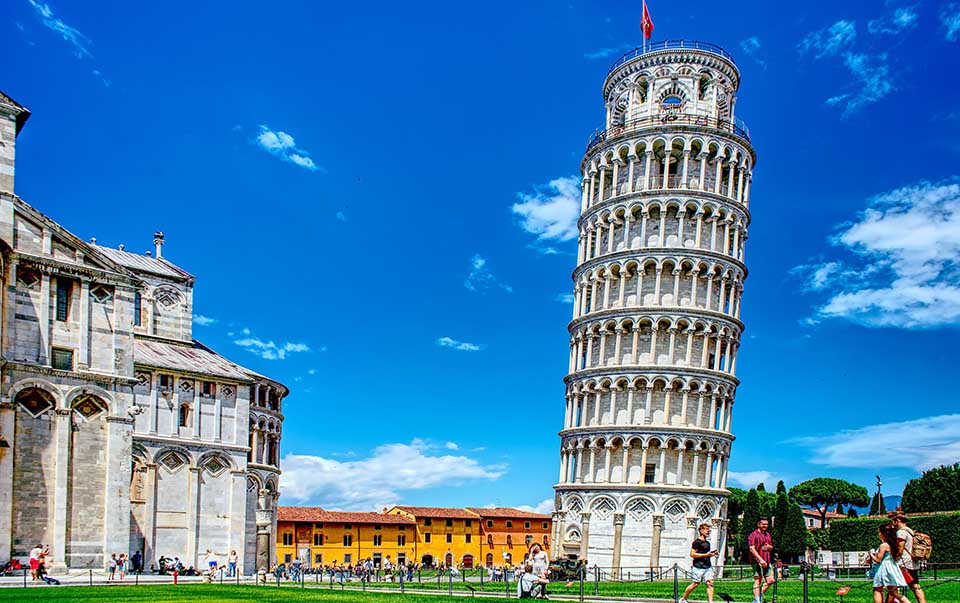
A Walk Through Pisa’s Streets: The Past and Present
After exploring the Piazza dei Miracoli, I ventured into the winding alleys of the city center. The architecture here is a blend of medieval and Renaissance influences, but the streets pulse with the energy of modern-day life. Pisa is home to one of Italy’s most prestigious universities, and I found that the presence of students added a vibrant, youthful flair to the city. The cafes, restaurants, and bars were filled with locals and students enjoying their daily routines.
One of the most delightful parts of exploring Pisa is its street art scene. Throughout the city, I discovered a number of murals, some large and colorful, others smaller and more subtle. These works of art, created by local and international artists, show the city’s openness to creativity and innovation. Walking through the streets felt like I was moving between two worlds: the historic city that has existed for over a thousand years and the modern, dynamic city that continues to evolve.
One of the standout spots I stumbled upon was the Piazza delle Vettovaglie, a bustling market square surrounded by medieval buildings. Here, I encountered an array of fresh produce, local cheeses, and cured meats—typical of the Tuscan culinary tradition. As I wandered through the market, I sampled some pecorino, a cheese that the region is known for, along with a slice of freshly baked bread drizzled with olive oil. The simple flavors of these local ingredients were a perfect reflection of the region’s agricultural richness. I also couldn’t resist picking up some cantucci, the classic Tuscan almond biscuits, to snack on as I continued my walk.
Pisa’s Borgo Stretto, a narrow pedestrian street, is lined with shops selling everything from high-end fashion to quirky handmade goods. The street feels both timeless and contemporary, with its cobblestone pathway and carefully preserved buildings, but there’s a distinct buzz that comes from the fashionable boutiques and local art galleries. It’s clear that Pisa, while steeped in history, has embraced the modern world, and this blend of old and new adds to its charm.
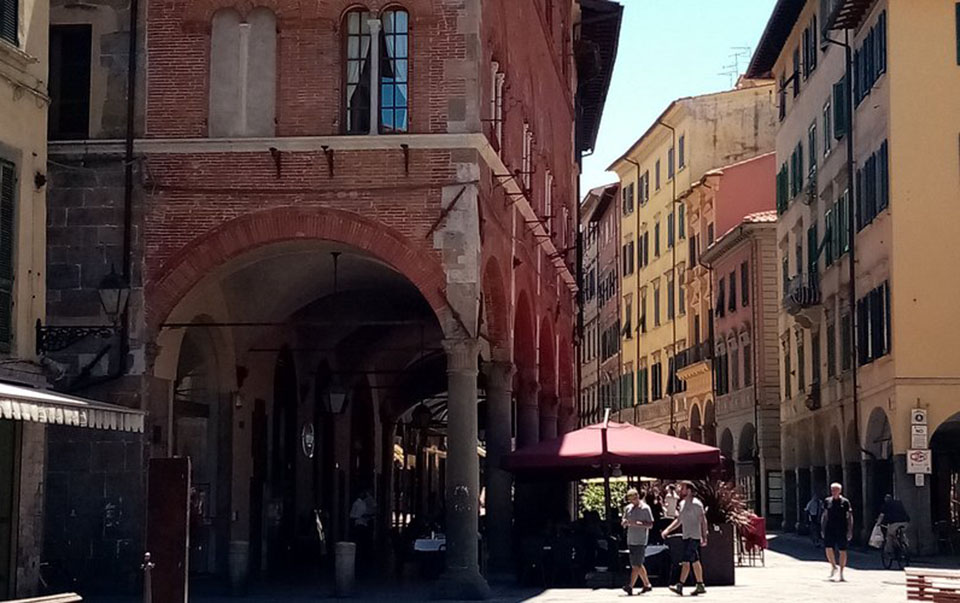
Pisa’s Art and Culture: Beyond the Monuments
Though Pisa is best known for its iconic landmarks, I found that the city also offers a rich cultural experience beyond the usual tourist attractions. Pisa is home to numerous museums that highlight its artistic and intellectual heritage, making it a haven for art lovers. One such place is the Museo Nazionale di San Matteo, a museum housed in a former convent that boasts an impressive collection of medieval and Renaissance art. The museum’s pieces, many of which are from local artists, gave me a deep insight into the city’s artistic evolution over the centuries. The works of master painters like Andrea del Sarto, whose pieces radiate the finesse of Renaissance craftsmanship, and the stunning Madonna del Latte by Giovanni di Paolo, left me in awe of the region’s rich cultural past. The museum’s serene atmosphere also allowed me to fully appreciate the beauty and significance of these centuries-old works.
Another gem in Pisa is the Palazzo Blu, a historic palace that now functions as a cultural center and museum. Inside, I explored an intriguing exhibition on contemporary art, which added a modern touch to my visit. The contrast between these contemporary pieces and the centuries-old walls of the palace was nothing short of striking. It’s an excellent representation of how Pisa successfully bridges the past and present, fostering artistic expression across time periods. The exhibits not only reflected the evolving artistic landscape but also showcased the city’s ongoing role in shaping the cultural narrative.
A Taste of Pisa: Culinary Delights
No visit to Pisa would be complete without indulging in the local cuisine. I found the restaurants to be as diverse as the city itself, offering a mix of traditional Tuscan dishes and more contemporary takes on Italian food. At one restaurant, I had the opportunity to try cecina, a savory chickpea flour pancake that is a Pisa specialty. It was light, crispy, and paired perfectly with a glass of Chianti.
Another culinary experience I had was at a small trattoria where I enjoyed pappardelle al cinghiale, a rich pasta dish made with wild boar. It’s a hearty and flavorful dish that reflects the region’s rustic agricultural roots. For dessert, I indulged in tiramisu, which, while not a local specialty, was made with a creative twist that reflected the chef’s modern approach to traditional dishes.
Throughout my stay in Pisa, I was struck by the warmth and friendliness of the locals. Whether in a cafe, a shop, or on the streets, the people of Pisa were eager to share their city with me. It’s clear that Pisa’s charm isn’t just in its historical landmarks or picturesque scenery, but in the spirit of the people who call it home.
A City That Lives Between Time
Pisa is a city where the past and present coexist in harmony. From its ancient monuments to its bustling modern streets, it’s a place where history is not merely preserved, but lived. Walking through its vibrant piazzas, I felt the pulse of the city’s rich heritage interwoven with the dynamic energy of its contemporary life. The Leaning Tower may dominate the skyline, but it’s the countless small details—the charming cafes, the creative street art, and the local markets—that give Pisa its soul. It’s a place where the old buildings tell stories of centuries gone by, while the new cafes and boutiques speak of the city’s modern spirit. As I left, I carried with me not only the image of the Leaning Tower but also the memories of a city that continues to grow and evolve, blending tradition and innovation in perfect balance. Whether you’re captivated by its historical significance or drawn to the energy of its modern-day life, Pisa offers a captivating experience that invites you to explore, reflect, and enjoy its timeless charm.
